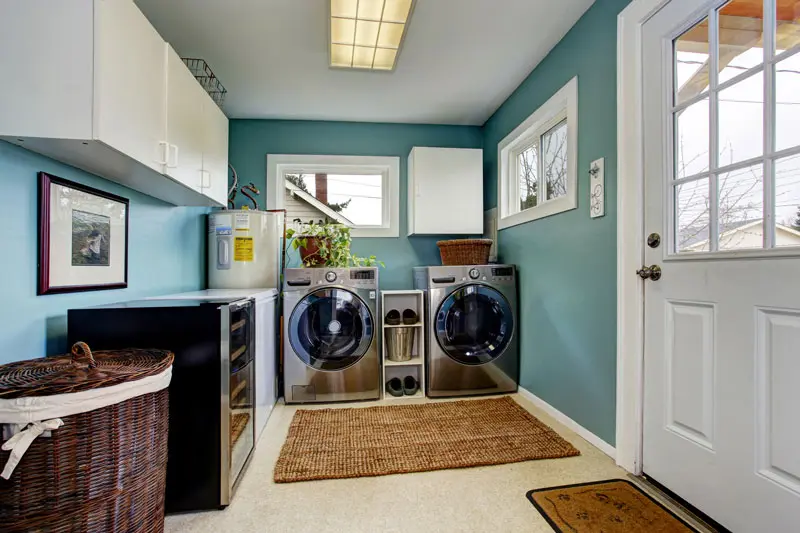Can I (and should I) Speed Up the Paint Drying Process in Winter?

Winter can be a surprisingly appropriate and efficient time of year to paint your interiors. For one thing, you’ll be spending much less time outdoors in the freezing cold weather, so you may as well make the best of the extra time you have. In addition, ambient humidity levels tend to be much lower in winter, making it easier to paint walls and ceilings to perfection.
On the flip side of the coin, keeping your home’s windows and doors wide open in winter isn’t something you’d normally do. It’s hard enough keeping a home warm and cosy when the mercury plummets at the best of times. Hence, the normal process of keeping the home as well-ventilated as possible when painting in the winter isn’t quite as easy.

Whichever way you look at it, getting the job done as quickly as possible in winter is what you’ll want to do. However modest or extensive your interior painting project, you’ll be aiming for rapid results.
All of this begs the question – is there anything you can do to speed up the paint-drying process in winter? If so, is it something that’s worth doing, or could you compromise the quality of the result in the process?
A Safe and Sensible Ways to Speed up the Paint Drying Process
The answer, in all three instances, is yes. You can speed up the paint drying process, you can do it safely, and you can also make a mess of things if you get it wrong.
It’s therefore something that needs to be approached with caution, and never taken too far. There’s only so much you can do to speed up the paint drying process, without it having a major impact on the way the paint adheres to the surface.
Whether planning to paint a single room this winter or spruce up your entire home, here’s how to spend at least a little less time watching paint dry:
- Apply Multiple Light Coats
When time is a factor, the temptation can be to apply excessively thick coats of paint to walls and ceilings. The theory is that by doing so, you’ll need to apply fewer coats, and you’ll get the job done faster. In reality, overly thick coats of paint are almost always a recipe for disaster. The paint will run, drip, smear and dry unevenly. Ultimately, you’ll spend more time picking up the pieces and correcting mistakes than it would have taken to paint thinly and evenly in the first place.
- Paint One Wall at a Time
Where possible, we always advise focusing your efforts on painting one wall at a time with pinpoint precision. By concentrating on one wall at a time, you give each prior wall plenty of time to dry as you tackle the next one. Once you’re done with one coat on all four walls, the first wall may be ready for its second coat. This not only adds up to a more efficient painting process in general, but also makes it much easier to produce a flawless finish across the entire space.
- Combine Ventilation with Heating
It is essential to ensure that your rooms are adequately ventilated, in order to deal with the moisture that evaporates from the paint as it cures. The perfect combination in winter is good ventilation and any conventional home heating system. Artificially heated indoor air is naturally dry in nature, pulling more of the moisture out of the wet paint at a faster rate. This is why painting at some warmer times can be comparatively difficult, when and in humidity causes paint to cure much more slowly.
- Keep the Air Moving
Similarly, setting up a few oscillating fans about the place will contribute to the cause. The air in the immediate vicinity around the curing paint will naturally contain more moisture than the air on the opposite side of the room. By keeping the air moving, you give the paint the conditions it needs to cure at the optimal pace.
- Use a Hair Dryer (or Not)
Last up, some people swear by using a hair dryer on a gentle setting to accelerate the curing process. At Homm CPS, it’s not something we can recommend, or even confidently condone. While it can technically work, it’s the kind of thing that can also wreck your entire paint job in a matter of seconds. If the air is too hot or blasted at the surface too powerfully, it will show in the finish – big time. Assisting the curing process is one thing – beating it into submission in ways like these is usually a bad idea.
For more information on the services we provide or to discuss your requirements in more detail, contact a member of the team at Homm CPS today.










